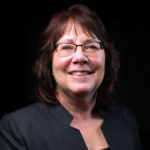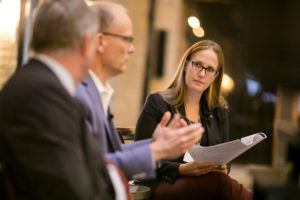 Tell me a little about yourself
Tell me a little about yourself
I earned my bachelor’s degree in finance from the University of Detroit then immediately began studies to become a CFA Charterholder. I am a portfolio manager at Gradient Investments, an investment firm with $2bn AUM and about 15 portfolios.
What sparked your interest in the investment industry and CFA Program?
I set out to do a book report on John D. Rockefeller in 8th grade. For research, I called Merrill Lynch and talked to a broker. I was fascinated with the amount of information this broker had at his fingertips. Throughout high school and college, I read the newspaper cover to cover and talked with my dad about investments. He also has a degree in finance from the University of Detroit, though he was not an active investor.
How/where did you land your first role?
After my second year in college, I went door to door to brokerage firms, banks, savings and loans and insurance brokerages for about a week. At the end of the week, I had two offers and went with a regional brokerage firm.
Did you have a mentor or champion who was instrumental in your career?
The interesting thing about mentors is that I am still looking for mentors —men and women, old and young people— people with good insights, experience and inputs. But no, I did not have just one.
What professional opportunities and challenges have you experienced?
A few challenges would be keeping up with day-to-day changes in the investment arena, and taking time off to be with my kids for several years. Because I am very eager to learn every day, I find that opportunities may show themselves from new inputs. A big opportunity I had was to come back to work for the same bosses twice in my career.
What is the biggest risk you’ve taken in your career?
The biggest risk I’ve taken was choosing to stay in the Midwest. I have friends who are in New York and can just go down the street for new opportunities. But I really value the honesty and integrity of the Midwest.
What got you here; how have you been successful in investment management?
Along with eagerness to learn, I was naturally an extrovert in an introvert role. I asked questions others are afraid to ask, I take good notes, I ask good questions and compile good data, noting the cadence of performance vs. expectations has been helpful in my career.
18% of CFA Institute’s members are female, and 14% of CFA Society Minnesota members are female. Do you have any thoughts on why more women aren’t pursuing a career in investment management?
I have wondered about this for a long time. I was the fifth woman president at the CFA Society Detroit in 2004. The first woman president was in 1983. I keep looking at the progress. It took 20 years to have the fifth woman president; why 20 years? I don’t understand. I think that maybe we need to address the girls when they’re still in middle school and not wait for the discussion in college. We need to get them interested in the idea of compounding and being patient, long-term investors. I think we just need to start earlier. There’s some unconscious bias by everyone to think that this is a man’s type of profession but look at Muriel Siebert – the first woman to own a seat in the New York Stock Exchange and opened her first firm in 1967. Money is agnostic, it doesn’t care what you look like. Why not just gather the skill set and use some determination? There are a lot of attractive aspects about this business.
Research has proven that the returns of diverse investment management teams outperform those of non-diverse teams. Have you seen this in your experiences?
I think so because most women are more patient and less trigger happy. I know sometimes its client driven and they want to see a change in sells and buys, but women are more cautious about changing from an old horse to fresher horse. Having that level of patience pays off in the long run.
Do you have any advice for young professionals interested in a career similar to yours?
My advice is to be more extroverted than others and resilient, keep that childlike eagerness to learn and always maintain your integrity. Find the place where you respect the people around you – but if you don’t, move on.
As a longtime CFA Charterholder, how have you seen the CFA Program and industry evolve?
When I first started, it was a rarity to hear people say they are studying for the CFA exam. Now, it’s more common. The pass rate is still low, but more people are attempting it. I am blown away by the numbers that are added to the rolls each year.
Student Interviewer
Yeng Lee is a first-generation student at Gustavus Adolphus College in Saint Peter. She was born and raised in Saint Paul and was first introduced to economics in her senior year of high school, which really intrigued her. Yeng is studying Financial Economics and English with a writing emphasis. After she graduates, she plans to take the CFA Exam and build on her experience to become a financial analyst. Yeng’s lifetime goal is to be a philanthropist.






 Tell me a little about yourself
Tell me a little about yourself 

